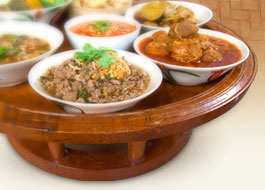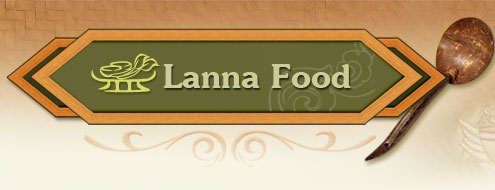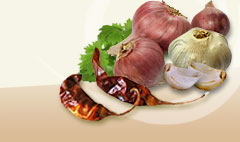Phak wan pa |
|
|
 | Melientha Suvais Pierre |
|
| |
 | Opiliaceae |
|
| |
 | Phak wan (General), phak wan pa. (Kanchana Diwiset, et al. 2005, p. 145) |
|
| |
 | Medium size deciduous tree, 6-10 m. high. Leaves elliptical ovate, dark green, similar to lime leaves, 2-3 in. long, acuminate, glabrous. Inflorescence in groups, axillary, dioecious, green. Drupe ellipsoid, 2-3 cm. long, 1.5-1.7 cm. wide, brownish yellow and red when ripe. (Kanchana Diwiset, et al., 2005 p. 145) |
|
| |
 |

Calcium, phosphorus, beta-carotene, Vitamin A. (Phak Phuen Ban Ahan Thai, 2005, p. 102). The young shoots and leaves serve as vegetables in soup or dried fish curry. It tastes sweeter than the homegrown variety. (phak wan ban). Caution should be exercised since some people pick a poisonous variety that looks like phak wan that causes one to vomit and loose consciousness and even die. (Rattana Phromphichai, 1999, p. 7490) |

The roots are anti-toxic and are used to treat bile problems and heartburn (Phak Phuen Ban Phak Nuea, 2005, 145) It also activates the amino-acids (protein) and carbohydrates as well as burning fat, resulting in weight reduction. (Phak Phuen Ban Ahan Thai, 2005, p. 102)
In Lanna medicine, its roots are an ingredient for the treatment of cancer. (Rattana Phromphichai, 1999, p. 7490)
|
|
| |
 | Summer, February-May (Kanchana Diweset, et al., 2005, p. 145) |
|
| |
 |
Kanchana Diwiset, et al., (comp.). (2005). Phak Phuen Ban Phak Nuea. Phennapha Sapcharoen, editor. (2nd ed.). Nonthaburi: Center for Text Development on Traditional Thai Medicine. (in thai). Phak Phuen Ban Ahan Thai. (2005). Bangkok: Saeng Daet. (in thai). Rattana Phromphichai. (1999). Wan Pa, Phak. InSaranukrom Wattanathamthai Phak Nuea (Vol.14,p.7490). Bangkok: The Siam Commercial Bank Foundation for the Encyclopedia of Thai Culture. (in thai). |
|
| |
|
|




